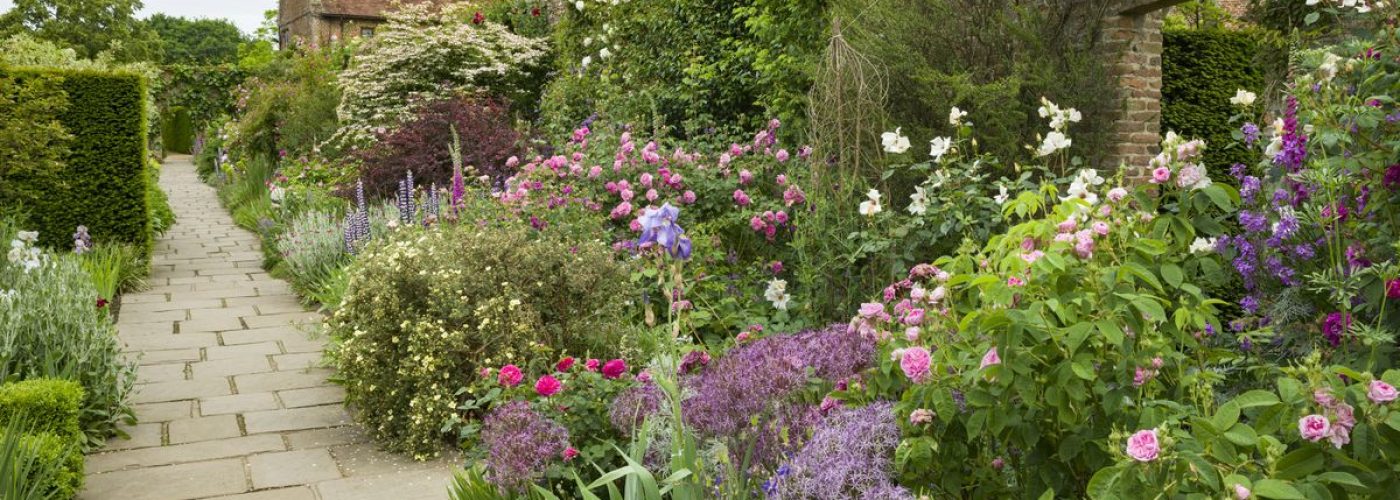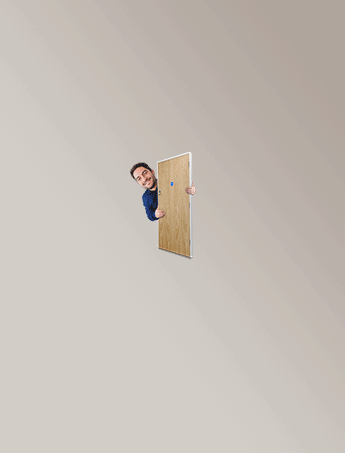Designing a garden isn’t so different from arranging a bouquet. Both rely on rhythm, texture, balance, and emotion. A bouquet brings that harmony to a tabletop; a landscape brings it to life on a larger canvas. Roses, in particular, offer a perfect bridge between floral artistry and outdoor design — expressive, layered, and timeless.
When you look closely at how a rose bouquet comes together, you’ll see lessons that scale beautifully into landscaping: color harmony, structural contrast, and the art of storytelling through composition. Each bouquet tells a short story; a garden simply tells a longer one.
This article explores how to apply the design logic that guides floral arrangements — especially those built around roses — to your borders, beds, and outdoor spaces. The goal is to help you think like a floral artist while planning like a landscaper.
From Tabletop to Terrain: The Design Parallels
Both bouquet-making and garden design start with one essential question: What feeling do you want to create?
A well-arranged bouquet typically features three main layers: focal blooms, secondary fillers, and structural greenery. The same layers exist outdoors: statement plants (like rose bushes or small trees), supporting perennials, and grounding foliage. Each layer frames the next, leading the eye naturally through the composition.
The key principle is harmony through contrast — pairing opposites in proportion. Just as a bouquet balances soft petals against structured stems, a garden balances tall vertical plants with spreading groundcovers, light flowers with darker leaves, open blooms with tight buds.
In other words, design is about tension and release — the dialogue between shape, texture, and color.
Color Harmony: Translating Bouquet Palettes into Garden Schemes
The Bouquet Approach
Florists often start with a dominant tone — say, blush pink or deep crimson — then build complementary shades around it. The same rule works in a garden. Roses come in nearly every hue, and mixing them requires a painter’s eye.
Applying It Outdoors
Start by identifying your “main rose color.” Then build a palette of plants that echo or contrast it:
- Monochrome harmony: Combine soft pink roses with mauve salvia, dusty miller, and pale grasses.
- Contrast pairing: Crimson roses against silver lamb’s ear or chartreuse heuchera create visual energy.
- Seasonal transition: In early spring, use cooler tones (lavender, white); in summer, deepen into warmer reds and golds.
Color guides emotion. A garden of soft whites and blush tones whispers calm; one with coral and ruby tones feels confident and lively. The principle that governs both bouquet and border design is intentional emotion, not random color placement.
Texture: The Secret Ingredient in Both Worlds
A successful bouquet never relies solely on bloom color — it’s the textural play that makes it engaging. Think velvety petals beside glossy foliage, feathery fillers offsetting dense blossoms.
In a garden, this principle becomes even more crucial. Texture determines how light interacts with your plants throughout the day. Rough, matte leaves absorb light; smooth, glossy ones reflect it. Combining both creates depth and visual rhythm.
For instance:
- Pair old English roses (dense, multi-petaled) with airy grasses like miscanthus or pennisetum.
- Add ferns or hostas for contrast against thorny stems.
- Let silvery foliage break up heavy bloom clusters and give the eye a place to rest.
Texture also affects maintenance — a mix of fine and coarse foliage helps mask fading blooms, keeping the border attractive throughout the year.
Structure and Balance: Building a Bouquet in Three Dimensions
Height, Depth, and Movement
A bouquet works because it’s arranged in layers — focal blooms in the center, supporting stems around them, and greenery to soften the edges. Gardens thrive on the same logic: height variation creates movement and narrative.
In practical terms:
- Use tall roses or vertical shrubs (like hollyhocks or delphiniums) at the back.
- Fill the middle layer with medium perennials (lavender, foxglove, catmint).
- Use low groundcovers or mounding herbs at the front to frame and soften edges.
Repetition and Rhythm
Bouquet artists often repeat certain elements — three stems of the same flower, grouped foliage — to create rhythm. In landscape terms, repetition guides the viewer’s eye across the space, creating a sense of coherence. Use the same rose variety or foliage plant at intervals to unify the design.
Negative Space
Just as florists leave air between blooms to prevent a bouquet from looking crowded, gardens need breathing space. Avoid filling every inch of soil. Small voids, such as gravel, mulch, or low-growing groundcover, help balance density with lightness.
Seasonal Transitions: The Garden as a Living Bouquet
Unlike a bouquet, a garden changes daily. The challenge is maintaining balance through the seasons. Borrow the bouquet-maker’s mindset: plan for what blooms together and what fades gracefully.
Spring
Layer early-blooming perennials (like irises and alliums) around roses for an awakening palette.
Summer
This is the rose’s peak — balance intense colors with foliage textures. Add companion plants like sage and lavender to attract pollinators and add fragrance.
Autumn
Use seed heads and ornamental grasses to echo the bouquet’s filler flowers — they extend interest after the roses slow down.
Winter
Evergreens and dried stems keep the structure visible, the way greenery holds form even after cut flowers fade.
Thinking in seasons ensures your “living bouquet” remains engaging throughout the year.
The Emotional Design Element
Great gardens and great bouquets share something invisible: they both tell a story.
A rose bouquet meant for romance feels lush and fluid; one meant for sympathy feels quiet and composed. Translate that emotion into landscape form. For instance:
- A romantic garden might feature curved pathways, climbing roses, and soft colors.
- A modern garden inspired by structure could rely on rose standards, sculptural hedges, and monochrome palettes.
- A nostalgic garden might use heirloom rose varieties, rustic trellises, and companion herbs.
When you design from emotion first, every other choice — plant, texture, placement — becomes more intuitive.
Maintenance and Longevity: Where Art Meets Real Life
Just as cut roses need fresh water and trimming, garden roses need care — but the trick is designing in a way that maintenance becomes part of the rhythm, not burden.
- Deadhead regularly to encourage continuous bloom.
- Feed in early spring with balanced fertilizer and mulch to retain moisture.
- Prune for airflow to prevent disease, maintaining both health and shape.
- Combine perennials that complement rather than compete — plants with staggered bloom times keep the display balanced.
By designing with care in mind, your garden stays beautiful without constant overhaul — the landscape equivalent of a bouquet that stays fresh longer because it’s well-prepared.
Inspiration Beyond Roses
The principles of bouquet design can inspire a wide range of gardens. Dahlias, hydrangeas, or peonies each teach a different design lesson. But roses are timeless because they bridge structure and softness — the two qualities that make any space feel both intentional and alive.
A garden inspired by bouquets isn’t about mimicking floristry — it’s about seeing plants as gestures in composition, not just objects in soil.
FAQ
1. How can I apply bouquet design principles when planning a rose garden?
Start with the same structure as a bouquet: focal elements (main roses), supporting plants (perennials and grasses), and fillers (groundcovers or herbs). Think in layers and repetition, leaving negative space for movement and light to flow through.
2. What color combinations work well for rose-based landscapes?
Stick to palettes with emotional intent—soft pastels for tranquility, deep reds and golds for energy, or whites and silvers for minimalism. Test combinations in small planters before scaling up — it’s like sampling a bouquet before building the whole arrangement.
3. How do I keep a rose-focused garden balanced across seasons?
Plan for companions that bloom before and after roses — such as tulips, lavender, and ornamental grasses. Maintain foliage contrast to keep the space structured even when flowers are in bloom. Treat the year as one long, unfolding arrangement.
Final Thought
Designing landscapes with the mindset of a bouquet artist changes how you see your garden — not as a static plot, but as a living composition. A rose bouquet is fleeting; a rose border is its lasting echo. When you borrow principles of proportion, rhythm, and emotion from floristry, you transform your garden into something more than scenery — it becomes a story told in petals, texture, and time.





